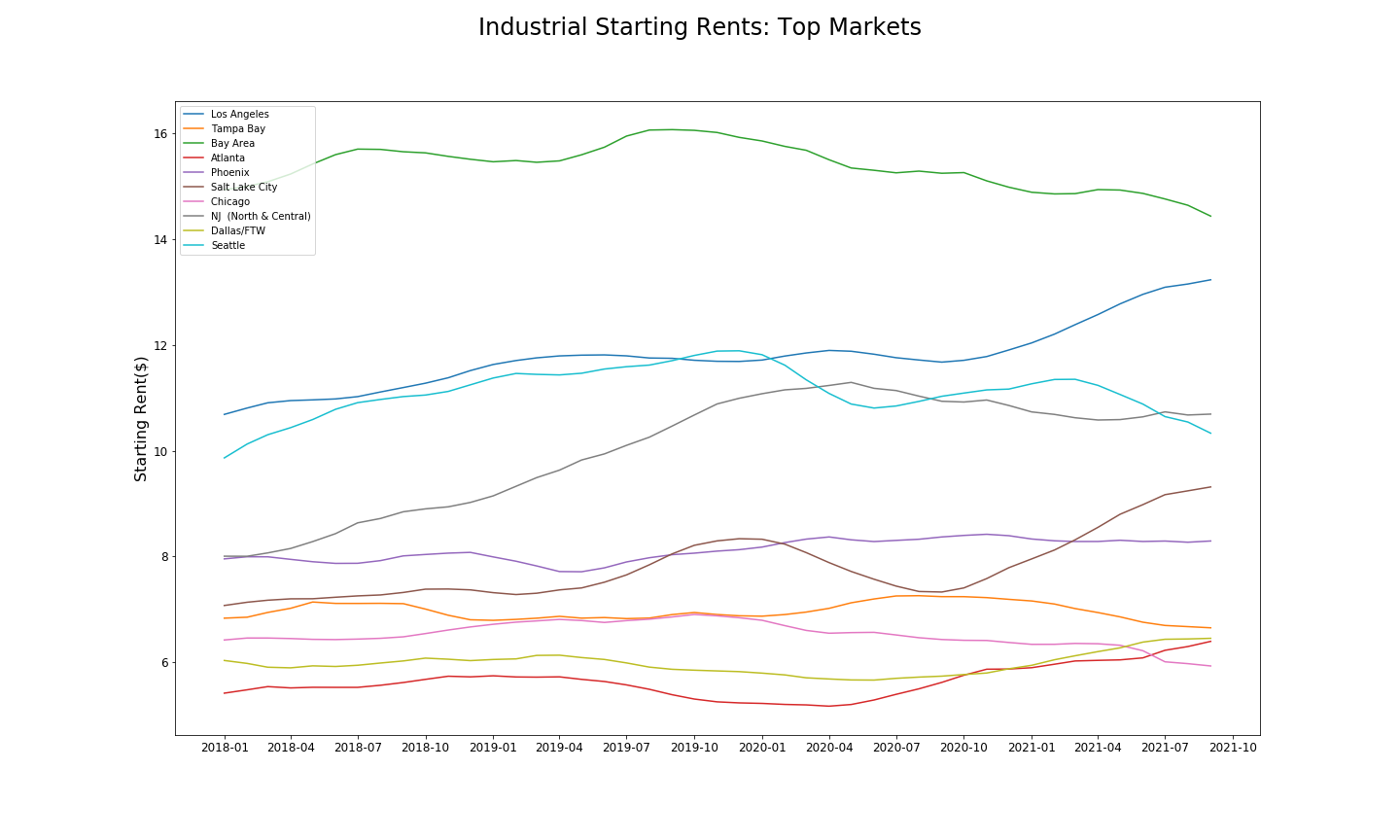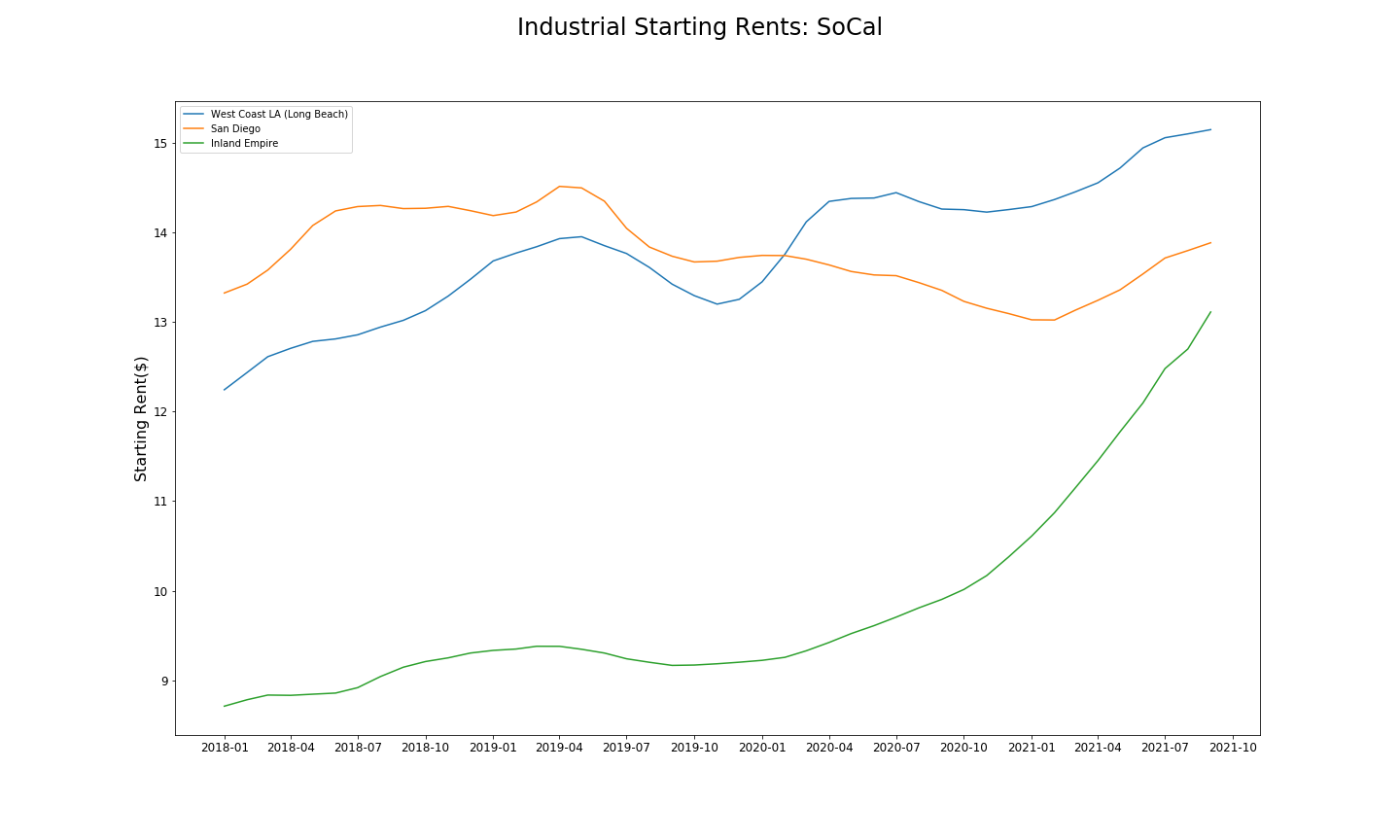Help us direct you to the right place to sign up

The supply chain crisis has been one of the dominant economic stories of the last year. Unlike many economic crises, its effect can be felt on a daily basis, from certain product shortages to inflation to frequent delivery delays. It has prompted action from business leaders to the President of the United States. The effects of economic events of this magnitude are bound to percolate into commercial real estate, specifically reflecting on the industrial sector.
To understand the supply chain crisis, it is important to have a firm grip on the supply chain: how various products move through the US economy. As a wealthy, services-based economy, the US imports far more than it exports. These imports run the gamut from toys to oil, and all first arrive in the major ports of the United States: Los Angeles and San Francisco in the west, and New York, Savannah, and Charlestown in the east.
These ports have different characteristics; Los Angeles and New York are some of the most important ports in the USA, but are both growth-constrained by the massive cities they neighbor. Southern ports are rapidly growing like Mobile and Savannah. Savannah is set to become the largest port on the eastern seaboard.
The square footage of industrial leases signed near the port of Los Angeles is smaller than those signed in Savannah. Why? Los Angeles is extremely dense, and there is no space to build a new super-sized warehouse. Spaces for rent in Mobile and Charleston are generally newer — as reflected in the new capital investments to enlarge the ports. We can combine CRE data with supply chain knowledge to understand the correlation between distant markets. Cargo unloaded in Los Angeles is either shipped north along the pacific coast or east towards Arizona and beyond. Conversely, goods that arrive in the Gulf Coast in Mobile are shipped north to Chicago along the Mississippi River Corridor. Changes in the industrial rents from the supply chain shocks will percolate along these axes. The industrial sector outperformed all other sectors throughout the pandemic, which was reflected in rising cap rates according to the CBRE U.S. Cap Rate Survey. Warehouse valuations are also rising.
 |
Industrial starting rents in Los Angeles have seen the highest increase as well as Salt Lake City, where Delta has a major hub. They recently rebuilt the airport and added new infrastructure, which makes it desirable and affordable. However, industrial rents are decreasing in the Bay Area, Seattle, and Chicago.

 |
To dive into the details of the industrial starting rents in the Southern California markets, Inland Empire has seen the steepest increase despite 20 million new square feet added in the past year becoming the hottest industrial market in the country. The same, although not as dramatic trajectory, is seen in San Diego and Long Beach markets.
The COVID-19 pandemic has accelerated the already fast-growing e-commerce industry and global supply chain disruptions driving industrial cap rates and starting and net effective rents upwards. Stay with CompStak for more industrial trends and other CRE insights.
Related Posts
The Importance of Transparency When Sharing Data: Podcast Recap


The Importance of Transparency When Sharing Data: Podcast Recap
Guide to the Best Commercial Real Estate Listings Sites


